The time seems right for a long-term
followup review to the
Sony NEX-6*. Sony recently announced two new high end cameras using the same lens mount as the NEX-6, but featuring larger full-frame sensors. The new cameras are called the
Sony Alpha a7 and the
Sony Alpha a7r, and they appear to be targeting the professional photographer. These bodies both have large, high resolution sensors mounted in durable splash-proof bodies.
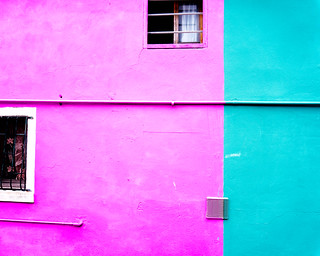 |
| The Colors of Burano |
I expect that the addition of these impressive-looking cameras on the high end of the spectrum will increase interest in the midrange E-Mount camera bodies. Why? I imagine that some folks will want to test out the NEX system with the expectation of later growing into the new full-frame cousins. Although the new a7 and a7r seem to have reasonable prices for their capabilities, they are still expensive, high end cameras.
The crop-frame NEX line of cameras also has a few minor advantages over the new a7 besides price. There are many more lenses on the market designed for the NEX than for the full-frame a7 and a7r. Sure, you can use a crop-frame E-mount lens (most of the lenses launched before the Alpha a7 and a7r qualify) with any E-mount camera, but those lens won't let you take advantage of the full sensor area of an a7 or a7r. Depending on what kind of photography you enjoy, you might discover that the most suitable lens isn't designed to fill an entire full-frame sensor.
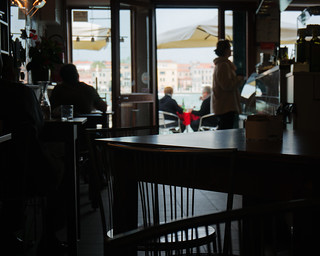 |
| Cafe in Venice |
On the other hand, there is no reason you can’t use a full-frame lens on a crop-sensor NEX camera. I personally never owned a full-frame Canon camera even though most of my lenses were designed for the full frame. I tell anyone who asks to spend more on great lenses rather than great camera bodies. You will probably find that you use a given lens much longer than a given body. The technologies in camera sensors change much more rapidly than the technology in the lens: just ask the folks who are using ancient Pentax, Leica, and other manual-focus lenses on modern cameras. You don't have to buy the best body to enjoy and get value from a fantastic lens.
Read on to see how the NEX-6 has treated me over the past ten months. All of the photos you'll see in this review were made with the NEX-6. Click on them to get a larger view.
Smart Phone Integration
In my first review of the Sony NEX-6, I noted how terrible the PlayMemories Android and iOS (iPhone / iPad) apps for the camera was. Maybe Sony heard my whining because several new revisions of the PlayMemories app have been released. Now I would say the apps are at least mediocre. That might sound bad, but it is a big upgrade over terrible. At least the apps work now. Now I can go to an event, take photos with my NEX, send them to my iPhone, iPad, or Android phone, edit them, and share them with just a few minutes of work. Like I mentioned in my last review, the camera makes fantastic photos. The extra steps involved in using the NEX instead of the iPhone 5’s built in camera is often worth it.
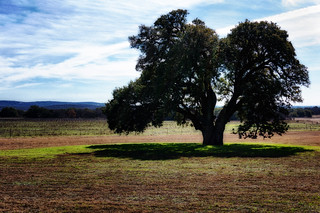 |
| Big Shade |
So how does the sharing to the Android work? In one method, you first go to the photo you want to share , hit the menu button, select “Playback”, select “View on smart phone,” and them select “This image”. At this point you can open the PlayMemories app, enter the password for your camera (for the first use only), and then wait a few seconds for the phone to connect to the Camera’s wifi network.
For the iPhone, you need to use the phone’s settings app to connect to the Camera’s wifi network before launching the PlayMemories app. For both platforms, the process takes maybe thirty seconds if it goes well. The Android app has crashed for me several times. I have also had issues when more than one of my devices connects to the same NEX-6. If more than one smart phone or tablet connects to the NEX-6, the sharing functionality seems to fail. It took me a while to realize what was happening. Bummer!
If all goes well, you will see a thumbnail of the image you were viewing on the camera. Tap the thumbnail to get a larger preview, tap it again to select it, and then hit the copy button to copy the photo to your phone's gallery. The app has a share button, but in my limited testing, it doesn’t seem reliable. Unless you can persuade the share button to work, you’ll have to go hunting in the gallery to find the photo you just copied over.
Lens Adapters
Another new development since my initial review is the
RJ Camera "Electronic Aperture Canon EOS (EF, EF-S) mount lens adapter to Sony E mount", which allows me to attach my big beautiful Canon glass to the NEX. The adapter I ordered allows the camera to control the aperture, capture the EXIF data from the lens (focal length, and possibly some other data), and to perform autofocus. I purchased this adapter so I could use the variety of Canon EF mount lenses I already own. Note that there are several different competing adapters that allow you to connect a Canon lens to an E-mount body.
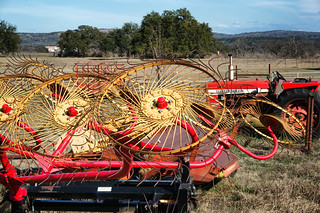 |
| Harvester |
Sadly, the autofocus using this adapter seems limited to the contrast based methods (the usual NEX-6 phase detection seems to be disabled), and feels really slow. Occasionally, the autofocus just gives up. The autofocus feature of the RJ Camera adapter doesn’t provide a great experience. It is useful in certain situations, but I mostly manually focus my Canon lenses, relying on the focus peaking and the ability to zoom in on the live view.
I mentioned in my initial review that the Sigma 30mm lens only focused using contrast detection. The Sigma feels reasonably fast to focus. Don't count on getting similar autofocus performance on the RJ Camera adapter. The focus behavior with the RJ Camera adapter attached jumps to what seems like a series of coarse focus points before dialing in at a finer level. Sometimes the camera gives up before the entire process completes. I've mostly been using this functionality with My Cannon 100mm IS L Macro lens. Different lenses seem likely to have different results. The camera has a very difficult time focusing with my Canon 8-15mm L fisheye lens.Your mileage may vary, but it seems unlikely you will get the kind of focus speeds needed for action photography.
Luckily, the NEX-6 has two nice innovations to assist with manual focus. First, it offers focus peaking. Focus peaking highlights areas in the viewfinder which are in focus with a colored fringe. It seems to work by highlighting high-contrast transitions at the pixel level. If you don't have an extremely fast aperture, it is an easy way to verify focus — as long as there is an area of high contrast for it to identify.
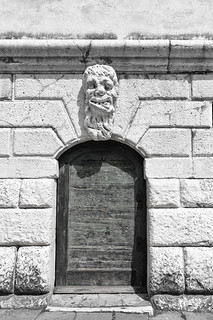 |
| Troll Door |
The other tool the NEX-6 offers is the ability to zoom in to the live view from the viewfinder or rear LCD display. Press a button, zoom in, focus. This takes more time than the focus peaking, but if does offer higher precision. Note that with the RJ Camera adapter, the in-lens image stabilization of my Canon lenses is disabled while using the zoomed in live preview. Unless you have a very wide lens, you’ll find this behavior disappointing. IS would really help keep things steady while focusing my Canon EF 100mm f2.8L IS Macro lens.
My one final comment is that the tripod collar which came with the RJ Camera adapter didn’t have a long enough screw to securely tighten it to the adapter. I purchased a pile of washers and a longer screw at Home Depot for a few bucks. Also, once you remove the body from the adapter, nothing but friction holds the collar on. That’s OK, unless you get confused and try to hold the adapter by the tripod collar. Do that without the body attached, and you might drop your lens. Be careful!
Durability
In my original review of the NEX-6, I complained about losing the viewfinder eyecup while walking around the Magic Kingdom. I’m still a bit disappointed in that experience, but since switching my carrying system away from the Black Rapid, I haven’t lost an eyecup again. If you plan to hang your camera upside-down from the tripod mount, you might start losing $12 eye cups too.
 |
| Elegant Food |
In case you’re curious, I now use a
PeakDesign Leash and also a
PeakDesign CapturePRO. The Leash is a very versatile shoulder strap that can be rapidly removed or reconfigured to become a tether to attach to your belt. The leash can be made quite long too, which allows you to hold the camera weight across the shoulders rather than just around the neck like a tourist.
The Capture is a system which securely holds a camera to a belt or strap using a specialized (but compatible with arcs-swiss tripod heads) plate. It’s a great way to completely remove the weight of a camera from the shoulders, and you can tighten it so that the camera doesn’t bounce around when you walk or run.
Like my Canons, my NEX-6 has had some rough treatment from me. It has been bumped around in bags with just a light neoprene padding. It has swung from my shoulders, and been bumped into people. The camera has been drizzled on, had various tasty sauces spilled on it. And it has pretty much survived without complaint. In fact, there is very little visible evidence that it has had a tough life at all. The only exception was the dang viewfinder eye cup that I lost about ten months ago.
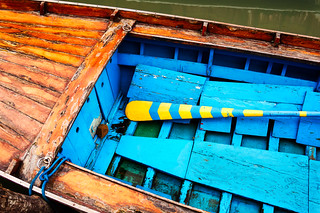 |
| Daily Driver |
Occasionally, the kit lens will fail to register on the camera. It’s always been an easy fix though: turn off the camera, remove the lens, re-attach the lens. The poor plastic lens housing has been abused enough to have a bit of an excuse. The 16-50mm kit lens spends more time on my camera than any other lens I own. It isn’t the best glass in the world, but it sure is light and versatile. Adobe Lightroom does a fine job of correcting many of it’s flaws.
Battery Life
The battery life on the NEX-6 hasn’t improved, but I did buy an inexpensive set of two
Wasabi batteries with a wall charger and even a cigarette lighter adapter. That means I have a total of three batteries for the NEX, and that I can charge them rapidly without worrying about the finicky USB charging on the camera body (see previous review). The three batteries have been more than plenty to get me through any day. When I travel for three or four day weekend, I sometimes leave the charger at home. I can always use USB to charge it in an emergency.
If you’re in a situation where you need the camera ready to take photos instantly, DSLR style, you will probably burn through batteries more quickly than I usually do. If you plan to use it extensively throughout a day, I suggest having at least one extra battery on hand. Luckily, the Wasabi batteries are not too expensive.
The Keeper Rate
I’m still convinced that my NEX-6 has a much higher keeper rate than my Canon 7D, or my Canon 40D. That is, I feel that more of the photos I take with the NEX-6 are sharp. With the Canon 7D, I seemed to capture a certain percentage of my photos slightly blurry, usually due to camera shake. I’m almost convinced that the dang swinging mirror in the Canon is what ruined so many photos for me. I suppose that it’s also possible that the additional weight of the dSLR somehow contributed to shaky photos too.
 |
| Sunday Exercise |
Either way, I worry less about motion blur in my photos on the NEX-6. It still can happen, but I don’t feel the need to take 3 photos of every beautiful scene.
Conclusions
For the most part, I really like the Sony NEX-6. Yes, the apps for Android and iPhone still make me weep. I develop iOS apps for a living, so I might be more picky than the average user. That said, I fell much better mentioning the feature than I did in January. The apps work much better now, even if they still frustrate me.
Also, I sometimes miss the lightning-quick focus of the Canon 7D, especially when I’m manually focusing my old Canon Glass on the NEX-6. The battery life of the Canon was far better too. And I can’t complain about the easy access to the most commonly used settings through buttons on the camera body. Every time I have to navigate a menu to change a basic setting, I miss my 7D.
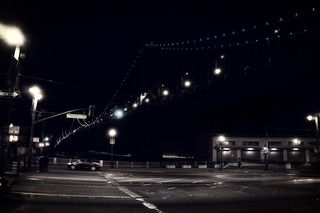 |
| Crossing Dark Waters - the Bay Bridge in San Francisco |
I don’t miss the size and weight of a dSLR though. The automatic modes on my NEX-6 are far more advanced and far more useful than on my Canon 7D. The NEX does a great job of picking shutter speed and aperture without my help in most situations (as long as I'm not using an adapter), and that’s great.
Likewise, auto-ISO is perfectly acceptable on the NEX-6. In my opinion the camera makes the correct tradeoff in terms of shutter speed and ISO. And I rarely feel like I need to disable automatic ISO to get a shot — something I can’t say about my Canon 7D.
I also love the electronic viewfinder, which is usable even in the dark and allows you to zoom in before taking a photo. When I use an optical viewfinder, I feel like I’m using an antique. How will I know what a photo will look like without knowing how the sensor sees the world? I can’t believe I was ever concerned about the lack of an optical viewfinder.
Over the next ten years, I see no reason for the traditional dSLR to stick around. At the moment, they have a few advantages, but think we will see the same capabilities in mirror less cameras in a few years. Cameras with moving mirrors will seem just as quaint as those antique cameras with bellows and flash powder do today.
[Article updated November 10th to include a link to the Wasabi batteries]
*Moving Average Inc. is a participant in the Amazon Services LLC Associates Program, an affiliate advertising program designed to provide a means for sites to earn advertising fees by advertising and linking to amazon.com. Buying items through this link helps sustain my outrageous camera addiction and is much appreciated!










